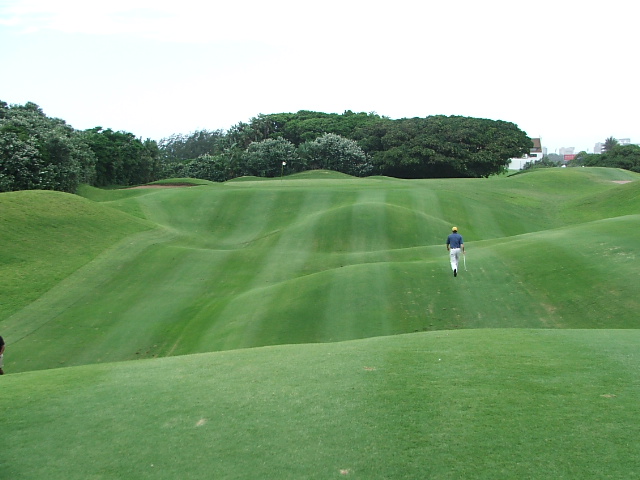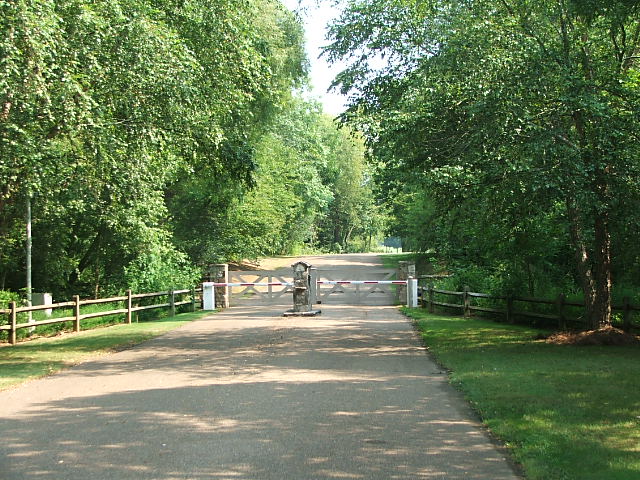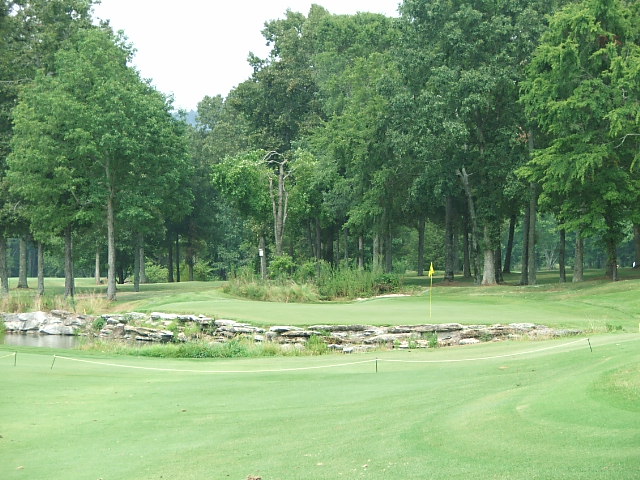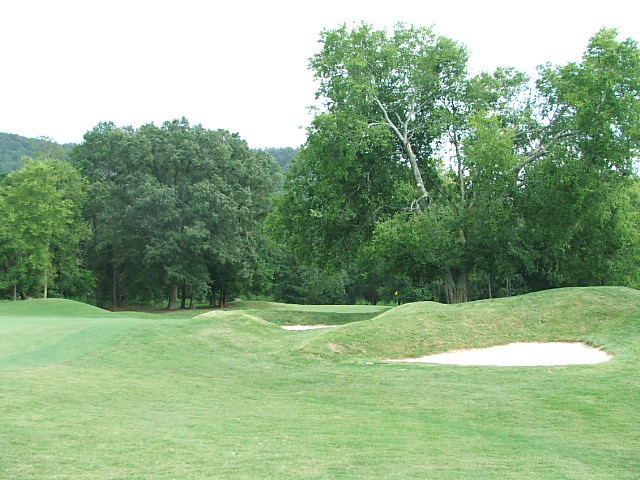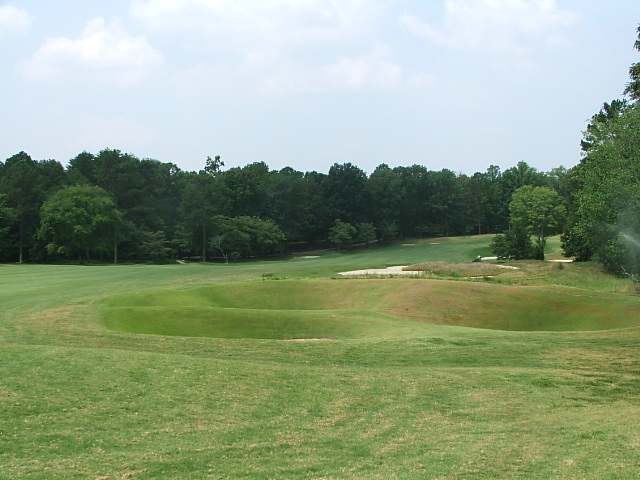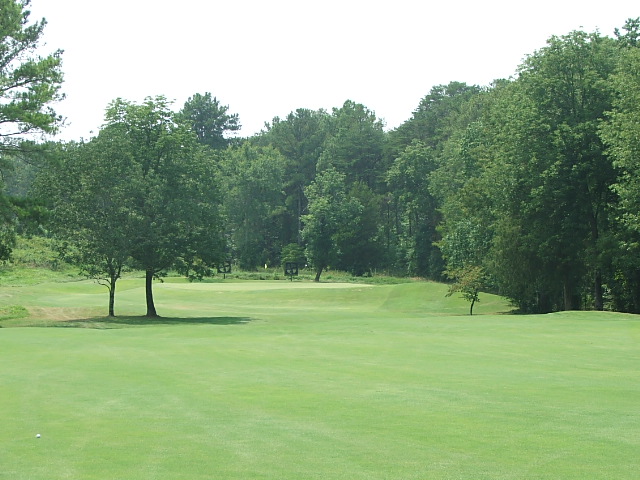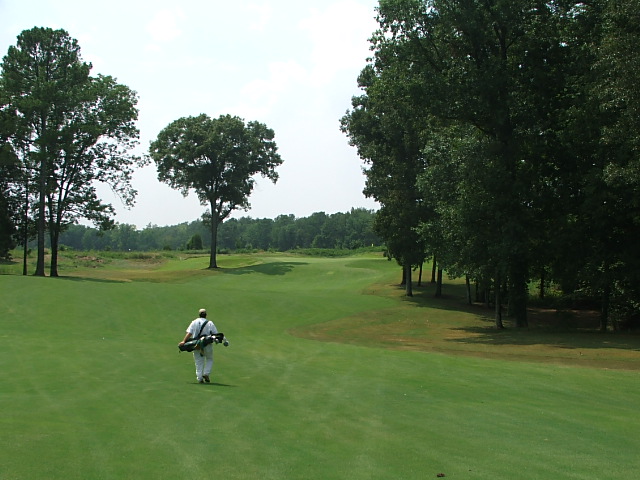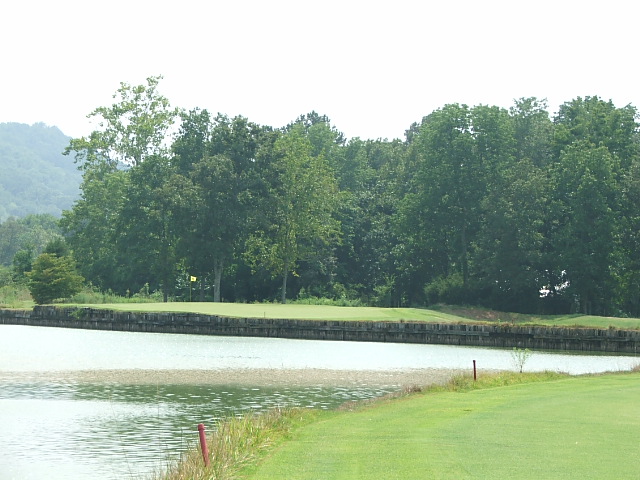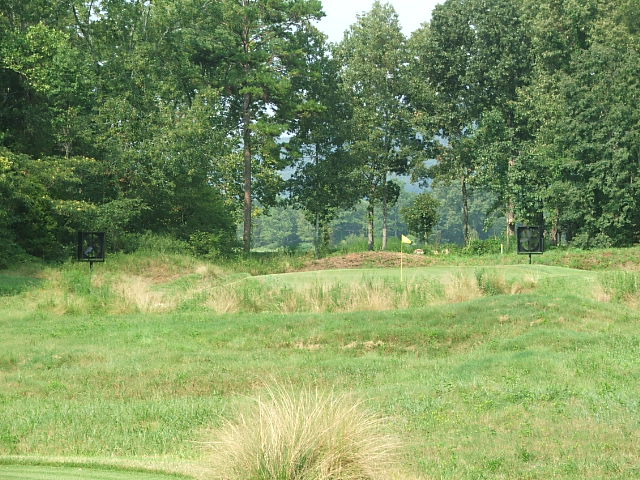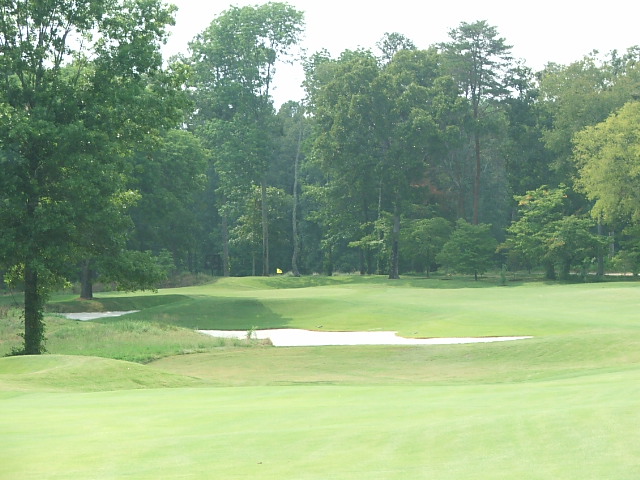 Near the first tee at Naruo
Near the first tee at Naruo1. Play with long pants - Golf at a private course requires long pants. Japan is a very hot and humid country and it would be nice to wear shorts, but long pants are required at private clubs.
2. Wear a jacket upon arrival. Like at the exclusive Garden City Golf Club in New York and Muirfield in Scotland, the proper protocol when arriving at a private Japanese club is to wear a jacket.
3. Arrive on time. Don't arrive early and don't arrive late. In a country where subway trains arrive the second they are supposed to, there is a premium put on punctuality. Bow when you meet your host and thank him profusely for hosting you. Bring a small gift and give it to your host when you meet him.
4. Check-in. When you arrive at the club for the round you will be greeted with a reception area similar to a hotel check-in. You will be given a little card holder and locker key with a number on the front. If you want to buy something in the pro-shop or halfway house, you sign the chits with your assigned number and everything is charged to the card. As you leave, you settle the bill. As with most payments in Japan, credit cards are accepted but as with most transactions in Japan, they prefer cash.

The caddie assignments at Tokyo golf club
5. A pre-round cup of coffee. If your host offers you a cup of coffee before the round, have it. All three hosts offered me coffee before the round, which you take sitting in the grill room as a prelude to the round.
6. No tipping. There is no tipping in Japan, period. This includes caddies, locker room attendants, etc.
7. Sign the sheet the caddie hands you. When you go out to play you will have a female caddie. She will have your bag already loaded on a cart and will have counted your clubs. You are asked to sign off on the number of clubs in your bag before teeing off and at the conclusion of the round. Since she won't speak English and the sheet she hands you is in kanji characters, it took me a while to understand what I was being asked to sign.
8. Lunch after nine holes. Unlike in the U.K. and the U.S., you stop after nine holes and have lunch. Lunch includes a beer before and coffee afterwards. I got a couple of dirty looks when I tried to skip either the beer or coffee, so I suggest having both. If you are not an adventerous eater and are worried about getting fish heads or some exotic dish, most courses have a curried rice dish that you can always fall back on. Some courses will give you a back nine starting time as you go in for lunch, others allow you to tee off on the back when you are ready. You will stiffen up pretty good at lunch, usually making the 10th hole an interesting hole.
9. Post-round communal hot bath. After the round, the fun really begins. The pièce de résistance of any Japanese golfing experience is the bath, known as o-furo. Your locker will contain a pair of small plastic slippers that will be about three sizes too small for your feet. After you finish playing, take off your golf shoes and put on the slippers. Leave your clothes on, but take a change of clothes with you. Head toward the bath area. As you enter, take off your slippers and walk to a changing area filled with baskets. This is where you take off your clothes and grab a small towel.
Whatever you do at this point, do not grab a large towel, it is a big breach of protocol. You then enter the shower area with your hand towel. There are western style showers available which are acceptable to use, but most Japanese men sit on foot-high little wooden stools and wash themselves vigorously out in a big open area. Japanese men are very reserved in all aspects of their lives except washing themselves in public. They embrace the task with such élan that I was taken aback each time I saw it.
After you have finished cleaning up, the custom is to take a communal hot bath. We're talking buck naked, boys. No towels to hide behind and no bathing suits allowed. Picture fifteen of your geriatric best friends together in a large hot tub immersed in water up to your neck, and you get the idea. Some of the bathers put the little towel on top of their heads during the bath, which makes them look like some sort of escapee from a lunatic asylum. The whole thing looks like it comes straight out of a Fellini movie.
The biggest faux pas possible would be to jump right into the hot tub without first showering. You would show yourself to be the ultimate gaijin (foreigner)and I shudder to think what would happen. It's the equivalent of peeing into a swimming pool back home.
Once you get it through your head that this ritual is not some sort of trick designed so that everyone can stare at your chibi anatomy, the whole bath routine is a nice way to finish off your round and does help your back feel better. Be warned that the scalding water can lead to an unexpected contraction of your most important organ.
Leaving the shower area, you must put the slippers back on after you dress to walk back to your locker, but only after stepping out of the area with the baskets. It is hard to remember the precise sequence of all these steps since there are so many little nuances. The first time I did this whole thing I got some disapproving stares because I walked to the bath area wearing only my BVDs. Oops. Saru mo ki kara ochiru (everyone makes mistakes).
10. Post-round drink. Have a post-round drink, usually beer, and try to regain your dignity.
11. Learn the word arigato. Arigato means thank you in Japanese. If you say it about 300 times a round, you're off to a good start. It is also ok to say, 'goo shot' if a Japanese player hits a good shot. I know it sounds goofy, but it's a bastardized English expression that you will hear often.
12. No gimmie putts. I'm not sure if this is true all over Japan, but the members I played with at all three courses didn't give any putts. Not even a three inch putt.











